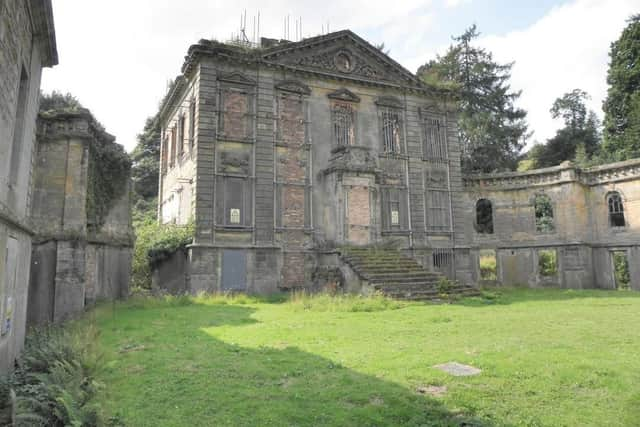Midlothian Council to take ownership of the ruins of 300-year-old mansion Mavisbank House near Loanhead
and live on Freeview channel 276
Midlothian Council is set to launch a legal bid to take ownership of the ruins of a 300-year-old mansion after it received a £5.3 million grant towards its restoration.
Mavisbank House, near Loanhead, has been at the centre of a decades long campaign to save it from demolition and has been dubbed Scotland’s most ‘at risk’ mansion. Campaigners have been fighting to save the Category A listed building since fire ripped through it 50 years ago, almost burning it to the ground.
Advertisement
Hide AdAdvertisement
Hide AdMystery surrounds its current owners and its ruinous condition following the blaze had left its future in doubt. But the National Heritage Memorial Fund has now announced a grant of £5.3m to the Landmark Trust to rescue and stabilise the mansion.
And Midlothian Council has said once funding is in place it will begin work to seek a Compulsory Purchase Order to take over the site.


Mavisbank House was built by celebrated Scottish architect William Adam in 1723 as a summer residence for John Clerk of Penicuik, a leading figure of the Scottish Enlightenment, and signatory of the Act of Union (1707). Its design was a pioneering example of a neo-Classical style which William Adam’s son Robert Adam and others would develop for Edinburgh’s New Town a generation later.
Attempts to raise funds to repair the house were unsuccessful until the announcement by the heritage fund which receives annual grants from the UK government towards its work to save the nation’s heritage.
Advertisement
Hide AdAdvertisement
Hide AdHistoric buildings charity The Landmark Trust has been working with Midlothian Council, Historic Environment Scotland, the Mavisbank Trust and others to find a solution to save Mavisbank for nearly a decade.
Councillor Kelly Parry, Midlothian council leader, said: “We have long supported the opportunity to restore Mavisbank House, so this is wonderful news. Once the full funding package is in place, we will use our compulsory purchase powers to help secure a future for this important building.”
The Trust and the local authority will now seek the purchase before preservation work begins. A second phase is planned to involve the restoration of the house with the end use is expected to be a mixture of accommodation for short residential stays and public access, including regular free open days.


Dr Anna Keay OBE, director of the Landmark Trust, said: “Mavisbank has hung by little more than a thread for so long, with demolition seriously contemplated on more than one occasion.
Advertisement
Hide AdAdvertisement
Hide Ad“The Landmark Trust is absolutely thrilled that through this grant from the National Heritage Memorial Fund, and the support and expertise of many others, we can start the process of saving it.’
The £5,3m grant is a huge boost to a funding package which includes an additional £1.3m from other sources including the Landmark Trust.
A further £1.6m is needed to complete to project still and anyone who wants to donate or find out more about the project can visit the campaign website.
In the 19th century, Mavisbank became a ground-breaking mental hospital where reforming Doctor John Batty Tuke developed compassionate approaches to mental illness, including through exercise and gardening.
Advertisement
Hide AdAdvertisement
Hide AdAfter the closure of the asylum, Mavisbank was sold and, following a major fire, demolition on safety grounds was ordered by the local authority in the mid-1980s. An emergency round-the-clock vigil was maintained by local volunteers until the decision could be halted.
Comment Guidelines
National World encourages reader discussion on our stories. User feedback, insights and back-and-forth exchanges add a rich layer of context to reporting. Please review our Community Guidelines before commenting.